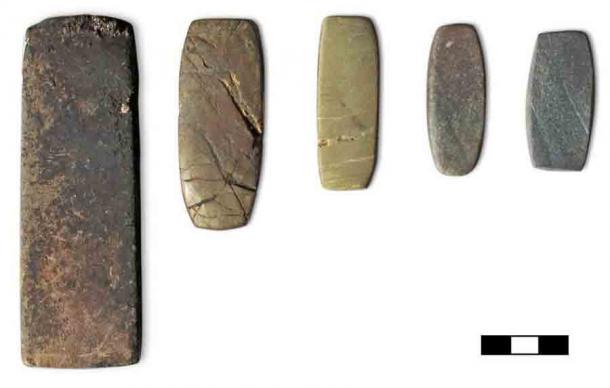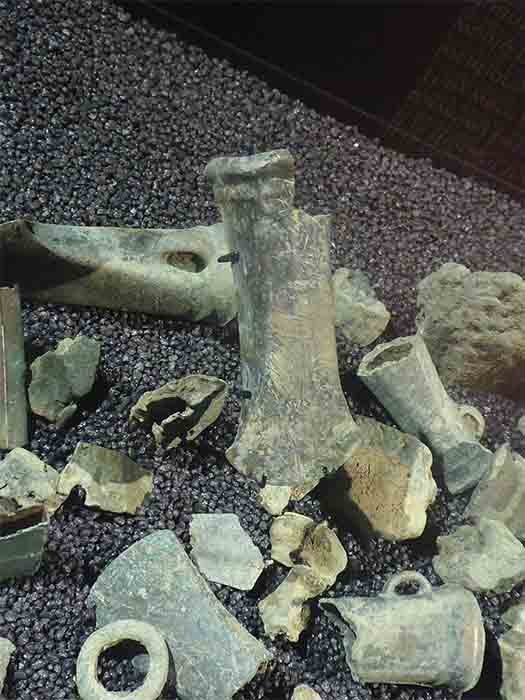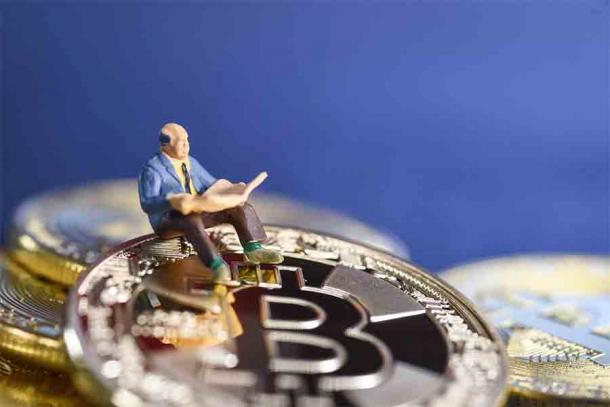Archaeologists from Germany and Italy have found convincing proof that people in Late Bronze Age Europe used metal scraps or fragments as a form of money. As excavations throughout Central Europe have revealed, people first began breaking metal objects into smaller pieces in Bronze Age Europe in the early second millennium BC. The practice then accelerated noticeably during the Late Bronze Age, starting around the year 1,300 BC. Any and all types of metal objects could be subjected to fragmentation, including tools, swords, axes, jewelry, small personal items, or metal casting waste products.

Mathematical analyzes of balance weights (such as the Bronze Age balance weights from southern Italy shown here) and metal fragments in Italy and Central Europe show that the unit of weight (shekel) corresponds to the weight of the fragments. This suggests that they were used as a common currency across Europe. (Scale bar = 3cm) (Nicola Ialongo / Georg-August-Universität Göttingen)
Proving That Metal Pieces Were Money in Bronze Age Europe
To test their theory that these small fragments might have been used as money, Nicola Ialongo from the University of Göttingen and Giancarlo Lago from Sapienza University of Rome examined and weighed more than 2,500 metal fragments recovered from Bronze Age excavation sites in Italy, Germany, and Poland. These fragments were included in large hoards of such objects, which have been found quite frequently in sites that date to the late second millennium BC.
Once they’d weighed everything, the archaeologists used statistical models to make comparisons. This methodology yielded important and remarkable results, revealing that these objects represented multiples of standard measurements of weight. One object might weigh twice as much as another, or three times as much as another, or half as much as another, and so on—which could not be dismissed as a coincidence.
Furthermore, the standard measurements they matched were not random. They correlated exactly with the weights of balancing weights that were in use across Europe during those ancient times.
These balancing weights were used to create scales. Among their other uses, it is now clear those scales were used to weigh the bronze metal fragments that have been recovered from Late Bronze Age dig sites. This was done to make sure they were cut to the right size and weighed just the right amount, so they could be put into circulation as “coins.”
It should be noted that Late Bronze Age Europeans were not the first people to use pieces of metal as money. The ancient Mesopotamians used bars of silver for the same purpose, starting in the early third millennium BC.
It is easy to see why archaeologists finding hoards of such objects might not immediately perceive them as money. The metal fragments discovered in Bronze Age sites were diverse in shape and size. They were also made from an eclectic mix of objects.
But while no visibly unifying factor could be found, their surprising similarities emerged once they were put back on a scale, for the first time in 3,000 years.

A selection of bronze pieces from the Havering Bronze Age hoard in the Museum of London, which were likely metal fragments used as money. (Udimu / CC BY-SA 4.0)
All Money is Real Money
Despite their diversity of appearance, these early “coins” shouldn’t be seen as a crude imitation of “real” money.
“There was nothing ‘primitive’ about pre-coinage money, as money before coins performed exactly the same functions that modern money does now,” said Ialongo, who is affiliated with the University of Göttingen’s Institute for Prehistory and Early History.
“It is likely that perishable goods were used as currency long before the discovery of metallurgy, but the real turning point was the invention of weighing technology in the Near East around 3000 BC. This provided, for the first time in human history, the objective means to quantify the economic value of things and services, or, in other words, to assign them a price.”
Hoards of small bronze objects only appear in Bronze Age sites that date to times after weighing systems had been invented. Also, as weighing technology began to spread across Europe, more and more bronze metal hoards began to appear in a greater number of locations.
In other words, the spread of weighing technology occurred simultaneously with the spread of the metal fragment collecting phenomena. This adds further evidence to prove that there was a link.
Weighing systems weren’t absolutely necessary to create standardized forms of money. But weighing systems made it much easier to use metal fragments for money, since they made it possible to assign metal pieces with fixed values based on a fixed characteristic (their weight). And as trade was developing, the need for something like money would have become more and more obvious.
“Just like in the Mesopotamian world, the compliance with weight systems is an indirect consequence of trade, rather than a pre-defined regulation,” Ialongo and Lago explained.

Today we live in a world of Bitcoins that are metal pieces but in fact are nearly 100% digital currency. (JeanLuc / Adobe Stock)
The Important Role of Money in Complex Economies, in Any Age
Bartering works fine as long as merchants and traders have objects to offer that their trading partners can use. But as trade networks expand to include larger populations, cover greater land areas, and introduce a rapidly diversifying menu of goods and services, direct trading starts to become impractical.
People are no longer able to barter for all the items and services they need or desire. They now require something more abstract, in the form of objects with uniform and universally-recognized value that will be accepted everywhere in all types of exchanges.
When economies are complex, money becomes useful. It now seems that people in Late Bronze Age Europe were living in increasingly complex economies where trading was brisk and where marketplaces were featuring more and more items transported over long distances. In such a climate, money would have been needed to keep the good times going.
Nevertheless, questions remain about how widespread and important the use of money in Bronze Age Europe actually was.
“We can only observe that metal fragments were used as money frequently enough to leave measurable traces in the archaeological record; how frequently is still not possible to define,” Ialongo and Lago wrote in a Journal of Archaeological Science article discussing their research.
Given the inherent difficulties involved in recovering small artifacts that have been buried for thousands of years, this is a meaningful observation. Over the years, thousands of hoards of metal fragments have been excavated from various Late Bronze Age sites. This strongly implies that money circulated widely and was frequently used by the ancient occupants of European lands.
Top image: ‘Money’ found all over Bronze Age Europe. These metal fragments are from the “soldiers’ bag” of the late Bronze Age battlefield of Tollensetal, Mecklenburg-Western Pomerania, Germany. Source: Volker Minkus and Thomas Terberger / Georg-August-Universität Göttingen
By Nathan Falde
Related posts:
Views: 0
 RSS Feed
RSS Feed















 May 8th, 2021
May 8th, 2021  Awake Goy
Awake Goy  Posted in
Posted in  Tags:
Tags: 
















